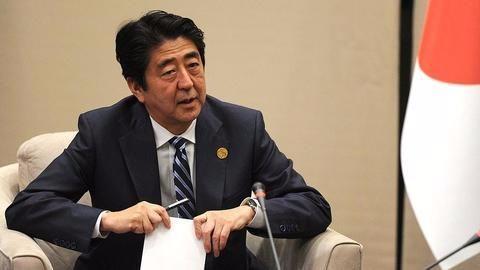
North Korean nuclear weapons
Three of four ballistic missiles fired by NKorea landed in Japan's exclusive economic zone, which was termed by PM Shinzo Abe a "new stage of threat".
The North, which is banned from missile or nuclear tests by the UN, fired them from the Tongchang-ri region, near its border with China.
The US detected a launch too, but didn't consider it dangerous to North America.
For over decades now, North Korea has been the most secretive country; its nuclear weapons program has its roots in the 1950s.
It is believed that the country possesses over 1,000 missiles of different capabilities, including long-range ones that could strike the US.
The country's nuclear program progressed over decades; from tactical artillery rockets during the 1960-70s to the present day's nuclear warheads.
NPT North Korea joined the NPT in 1985The Nuclear Non-Proliferation Treaty came into force in 1970.
Its objective is to avoid the spread of nuclear weapons technology, encourage peaceful uses of nuclear energy, and achieve nuclear disarmament.
North Korea joined the NPT in 1985; the International Atomic Energy Agency (IAEA) charged N-Korea of violating the treaty in 1993.
Amid suspicions that it was developing nuclear weapons, N-Korea threatened to quit NPT.
2002-06 N-Korea was violating the NPTIn 2002, the US revealed N-Korea was violating the treaty and operating a secret nuclear program; while N-Korea expelled IAEA inspectors.
In 2003, after quitting the NPT, N-Korea reactivated its nuclear facilities; it tested missiles and declared that it possessed nuclear weapons.
After the failure of talks between N-Korea, S-Korea, US, China, and Japan during 2003-06, N-Korea tested its first nuclear weapon in 2006.
2006-13 Nuclear weapon tests in North KoreaIn October 2006, North Korea announced it had conducted its first nuclear weapon test with a yield of 1 kilotonne.
In May 2009, a second nuclear device with a yield of 5 kilotonnes was detonated.
In February 2013, the third nuclear test with a yield of 6-7 kilotonnes was conducted.
The tests invited harsh condemnation and international sanctions that aimed to cripple N-Korea's economy.
Hydrogen Bomb North Korea claims successful thermonuclear detonationOn 6 Jan'16, North Korea detonated a nuclear weapon of unknown yield, which was claimed by the country as a hydrogen bomb.
N-Korean state media reported the test conducted near Punggye-Ri nuclear facility was successful.
The European-Mediterranean Seismological Center said the epicenter of the detonation was 2km underground.
The nuclear weapon test caused a seismic yield of 5.1, according to the US Geological Survey.
Fact What is a thermonuclear weapon?A thermonuclear weapon/hydrogen bomb produces a fusion reaction where colliding nuclei form new nuclei. These weapons generate explosions that are several times more powerful than atomic bombs.
10 Sep 2016 North Korea successfully conducts fifth nuclear weapon testNorth Korea has - in continued defiance of the United Nations' resolutions - conducted its fifth nuclear weapon test.
A 5.3-magnitude tremor was detected near the nuclear weapon test area.
South Korea said the yield of the explosion could be ten kilotonnes while other expert findings suggested it was over 20 kilotonnes.
It could be N-Korea's biggest-ever nuclear test indicating the country's nuclear advancement.
Fact US warns the North of serious consequencesWorld leaders, including US President Barack Obama and S-Korean President Park Geun-Hye, expressed anger. Japan adamantly protested while China opposed the nuclear test; the US warned N-Korea of "serious consequences" including additional sanctions.
11 Sep 2016 Sanctions to follow N. Korea's latest nuclear testUS Special Envoy to North Korea, Sung Kim stated that the US, Japan and South Korea were considering imposing unilateral sanctions against North Korea after its latest nuclear test.
These sanctions will be in addition to UN Security council sanctions that are to be imposed shortly.
The North however, defended the tests saying is was to protect North Korean interests against US blackmail.
02 Jan 2017 North Korea to test launch of ICBMNorth Korean leader Kim Jong-Un said that his country was close to testing the launch of an intercontinental ballistic missile.
In a televised New Year's Day speech, Kim said, "Research and development of arms equipment is actively progressing and ICBM rocket test launch preparation is in its last stage."
North Korea has been under UN sanctions for nuclear and ballistic missile tests since 2006.
06 Mar 2017 Three North Korean missiles land in JapanThree of four ballistic missiles fired by NKorea landed in Japan's exclusive economic zone, which was termed by PM Shinzo Abe a "new stage of threat".
The North, which is banned from missile or nuclear tests by the UN, fired them from the Tongchang-ri region, near its border with China.
The US detected a launch too, but didn't consider it dangerous to North America.

Legal Disclaimer:
MENAFN provides the
information “as is” without warranty of any kind. We do not accept
any responsibility or liability for the accuracy, content, images,
videos, licenses, completeness, legality, or reliability of the information
contained in this article. If you have any complaints or copyright
issues related to this article, kindly contact the provider above.


















Comments
No comment